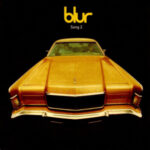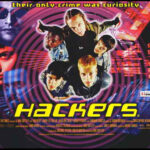 No film released in the 21st century has triggered more confusion, disgust, critical condemnation, and cult admiration than Tom Green’s 2001 feature Freddy Got Fingered. It arrived at the tail end of a decade defined by gross-out comedy and youth rebellion, packaged like another slapstick studio vehicle but harboring something far more radical beneath its absurdist veneer. Universally reviled upon release—earning Razzie awards, critical scorn, and a reputation as a cinematic disaster—Freddy Got Fingered has since found an unexpected second life. To watch it now, decades later, is to see it not as a misguided comedy, but as a fierce, dadaist parody of American filmmaking, masculinity, and narrative structure itself. It’s time to recognize Freddy Got Fingered for what it is: a misunderstood American classic.
No film released in the 21st century has triggered more confusion, disgust, critical condemnation, and cult admiration than Tom Green’s 2001 feature Freddy Got Fingered. It arrived at the tail end of a decade defined by gross-out comedy and youth rebellion, packaged like another slapstick studio vehicle but harboring something far more radical beneath its absurdist veneer. Universally reviled upon release—earning Razzie awards, critical scorn, and a reputation as a cinematic disaster—Freddy Got Fingered has since found an unexpected second life. To watch it now, decades later, is to see it not as a misguided comedy, but as a fierce, dadaist parody of American filmmaking, masculinity, and narrative structure itself. It’s time to recognize Freddy Got Fingered for what it is: a misunderstood American classic.
To understand Freddy Got Fingered, one must understand Tom Green—not the man, but the public persona that the film deliberately deconstructs. By the time the movie hit theaters, Green was a media phenomenon: his MTV show had redefined guerrilla comedy, pushing shock humor into uncomfortable, abstract territory. His stunts were not mere pranks—they were performance art. He didn’t just gross people out; he confused them, exposed their expectations, and frequently made himself the butt of the joke. This anti-comedy spirit is the key to Freddy Got Fingered, a film that uses the structure of a Hollywood underdog story to undermine the very idea of narrative coherence or emotional catharsis.
Marketed as a gross-out comedy in the mold of American Pie or Road Trip, the film was, in reality, a surrealist middle finger to those very tropes. It follows Gord Brody (played by Green), a 28-year-old man-child with dreams of becoming a successful animator. After moving back in with his parents, Gord clashes with his violently angry father (played with terrifying energy by Rip Torn), engages in increasingly erratic behavior, and falsely accuses his brother Freddy of being molested—hence the film’s title. But to reduce the film to its plot is to miss the point. The plot is merely a delivery system for chaos.
At first glance, the movie appears incoherent, vulgar, and juvenile. Green delivers lines as if parodying line delivery itself. Characters behave irrationally, scenes veer off-course, and visual gags—such as playing a sausage piano or a sequence where Green finds a deer and then wears its bloody skin—don’t follow any logical comedic rhythm. That is the brilliance. Freddy Got Fingered isn’t failing to be a normal comedy; it is actively rejecting comedy’s traditional forms. It’s anti-comedy in the truest sense, closer in spirit to Andy Kaufman or early Harmony Korine than Judd Apatow or Todd Phillips. The joke is that there is no joke—or rather, that the joke is how you, the viewer, react to being denied one.
Much of the film’s genius lies in its aggressive subversion of the “dreamer’s journey” trope. Gord wants to be an animator, and by the end of the film, he succeeds. He sells a show to a major network and is given a million-dollar check. In a traditional film, this would be a triumphant, crowd-pleasing resolution. But Freddy Got Fingered plays this moment as meaningless. Gord spends the money building a replica of his parents’ house in Pakistan and orchestrating a convoluted scenario in which he and his father are kidnapped by terrorists, only to be returned home to a cheering American crowd. Success, the film argues, is as arbitrary and ridiculous as failure. There is no redemption arc. There is no character growth. There is only spectacle.
This mockery extends to how the film treats authority and family. Rip Torn’s performance as Gord’s father, Jim, is a feverish caricature of toxic masculinity. He is cruel, violent, and irrationally hostile toward his son. But rather than learn empathy or soften over time, he becomes even more deranged, culminating in sequences of screaming, destruction, and eventually, shared lunacy. The idea of the loving-but-strict father figure is obliterated. Likewise, the film’s depiction of Gord’s mother, who leaves the family early in the story, is a complete abdication of emotional grounding. She’s just… gone. These aren’t characters designed to move you—they’re props in Green’s meta-commentary on the hollowness of forced emotion in Hollywood scripts.
Perhaps the most radical figure in the movie is Betty (Marisa Coughlan), Gord’s love interest. She is a paraplegic rocket scientist with a fetish for being whipped on the legs with a bamboo cane and giving blowjobs. At first, it seems like a cruel joke. But Betty is perhaps the only truly competent and self-actualized character in the film. She builds rockets, pursues her desires unapologetically, and supports Gord without ever needing to be “fixed.” Unlike typical love interests in gross-out comedies, she is neither a trophy nor a punchline. If anything, she’s the hero of the story—she actually achieves her goals without sacrificing her eccentricity. This quietly subversive character arc challenges the deeply gendered power dynamics of the genre, disguising radicalism as absurdity.
Critics in 2001 pounced on the film’s vulgarity and incoherence. Roger Ebert infamously awarded it zero stars, calling it a “movie where you feel embarrassed not for the cast, but for the crew.” But this critique assumes that the film was trying to be traditionally successful. What if the aim was not to please, but to disturb? What if the film’s disjointed pacing, garish imagery, and shrill dialogue were intentional strategies—meant to expose the formulaic nature of commercial cinema by embodying its worst instincts, then detonating them?
It’s no coincidence that Freddy Got Fingered ends not with a moral, but with a credits sequence set to a remix of the phrase “Daddy, would you like some sausage?” The repetition becomes a kind of mantra, daring you to laugh, cringe, or simply admit defeat. It’s as if Green is staring directly into the camera and asking, “Was this what you wanted?” It’s confrontational art disguised as juvenile idiocy, and that’s why it was rejected by so many who wanted something safe.
Over time, the film has gained traction as a cult classic—not in the ironic, so-bad-it’s-good sense, but as a genuine artifact of outsider creativity. Filmmakers like Quentin Tarantino and David Lynch have praised its originality. Internet critics, comedy theorists, and even university classrooms have revisited the film as an example of avant-garde subversion hiding behind a mainstream façade. What once seemed random now looks like design. What once felt like failure now reads like rebellion.
There’s a strange freedom in Freddy Got Fingered. It is a movie unconcerned with structure, with likability, with polish. It flouts industry norms at every turn. Its gross-out gags aren’t there to titillate—they’re there to confront. Whether it’s Gord licking the bone marrow out of a compound fracture, or swinging a newborn baby by its umbilical cord, these moments are too uncomfortable to laugh at. They aren’t “funny” in a traditional sense. They’re eruptions of chaos, interruptions of our expectation. Green is forcing the viewer to question their own tolerance for absurdity and discomfort.
That’s not to say the movie is flawless. It’s not. It drags in places. Some jokes simply don’t land. Some imagery feels less like art and more like a desperate attempt to provoke. But even in its failures, Freddy Got Fingered is fascinating. It is alive with risk. It is a product of singular vision in an industry allergic to such things. It’s what happens when you hand a subversive comedian a major studio budget and let him do whatever he wants—and more importantly, when he uses that opportunity not to pander, but to attack the very system that enabled him.
In retrospect, Freddy Got Fingered might have been released at the worst possible time. America in early 2001 was still entrenched in a pre-9/11 innocence. The cultural mood favored slickness, optimism, and resolution. There wasn’t room for a film this anarchic, this nihilistic, this defiantly weird. But its failure then is its triumph now. Viewed from the distance of history, it’s clear that the movie anticipated the meme logic of the internet, the decentralization of comedy, and the rise of absurdist anti-humor that dominates TikTok, YouTube, and niche comedy spaces today.
In a world saturated with sanitized reboots, algorithmic storytelling, and risk-averse media, Freddy Got Fingered stands out as an act of wild, uncompromising art. It is offensive. It is grotesque. It is often unbearable. But it is also fiercely original, defiantly individual, and deeply committed to its own insanity. It is punk cinema. It is absurdist theater. It is the cinematic equivalent of performance art performed in a shopping mall food court—half spectacle, half critique.
Tom Green may have been laughed out of Hollywood for making Freddy Got Fingered, but in doing so, he created something that will outlive most of the safe, successful films of its era. Like all great misunderstood works, it requires a reevaluation—not because it secretly hides a moral message, but because it dares to throw all messages out the window and scream nonsense into the void.
Sometimes, that’s the only honest response to the absurdity of modern life.
And that’s why Freddy Got Fingered is not just a movie—it’s an American classic.
This post has already been read 32 times!









